Colorado
A Photo Journal of America's Rocky Mountain State
Article Date: January, 2015
Article and Photography by Mark Quasius
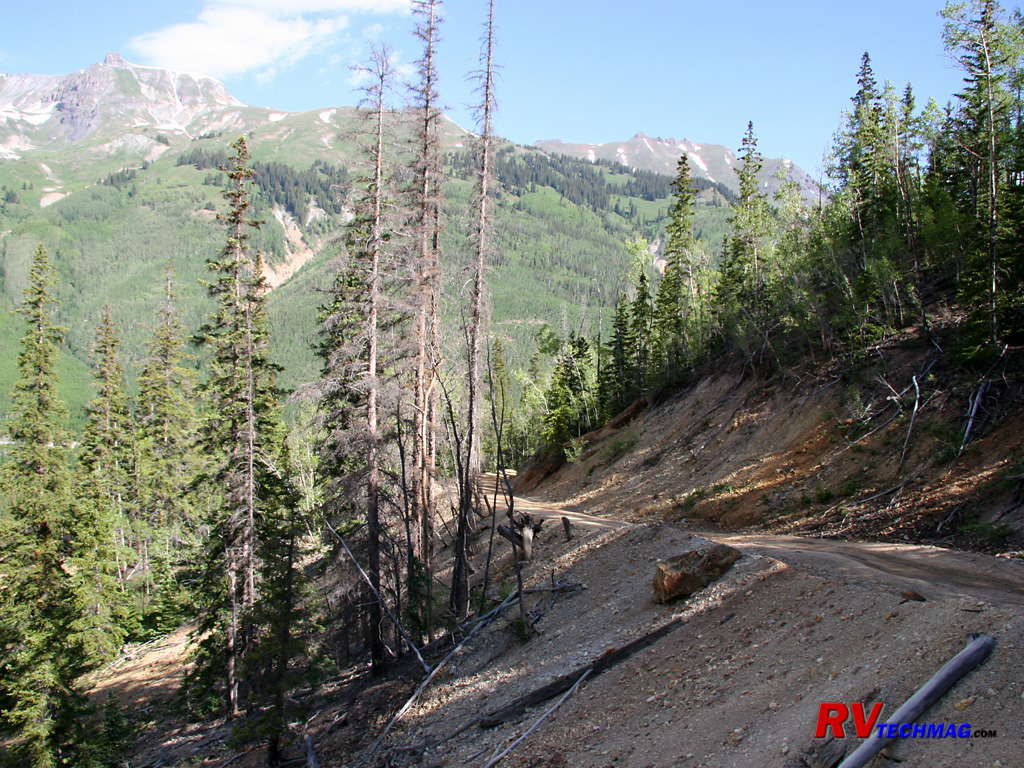
Mount Evans
Mount Evans is found west of Denver on the Front Range of the Rockies. Easily accessed from Idaho Spring, a paved road takes
you to it's summit. At 14,270' this is the highest paved road in America and offers panoramic views of Denver's front range and the plains below. At
the turn of the last century, Denver and Colorado Springs were competing for tourist dollars from eastern travelers. In 1888 the Cascade and Pikes Peak
Toll Road Company completed a 16 mile road up the north side of Pikes Peak. This was an instant hit with tourist so Denver's mayor lobbied for a road
up Mount Evans to keep tourist dollars from getting away. In 1917 Denver was able to secure state funding to complete a road to the top of Mount Evans
and the road was completed in 1927.
The drive begins in Idaho Springs, just west of Denver. A 2 lane blacktop road winds its way through the forests and climbs up
to Echo Lake. Echo Lake is located at 11,000' and features the Echo Lake Lodge as well as a park maintained by Denver Mountain Parks. Continuing on
past Echo Lake there is a gate that closes the road above 11,000' during the winter season, which generally runs the end of September through Memorial
Day. Continuing on to Summit Lake there is a rest area and pit toilets that are maintained by Denver Mountain Parks. Once you reach the summit there
is a parking lot. The remains of the Summit House, which was built during the summers of 1941 and 1942, are still here. Summit House had a restaurant
and gift shop and offered great views of Denver and the eastern plains. Unfortunately, it burned in 1979 and was never rebuilt.
In addition to scenic vistas, Mount Evans is brimming with wildlife. Elk are found in the lower sections while Rocky Mountain
Bighorn Sheep are abundant at all elevations. Mountain Goats can be seen traveling over impossibly rocky terrain with ease while Pika hideout amongst
the rocks at higher elevations. Mount Evans has more Marmots per mile than any other mountain in Colorado and can be seen at varying elevations as
they dart in and out amongst the rocks.
Mount Evans is a true recreational spot. The wilderness area is administered by the US Forest Service and is popular with
hikers and bicyclists as well as passenger car tourists. At 14,270' the air is thin so recreation needs to be limited to those who have adapted to
this higher altitude but the mountain does offer something for everyone.
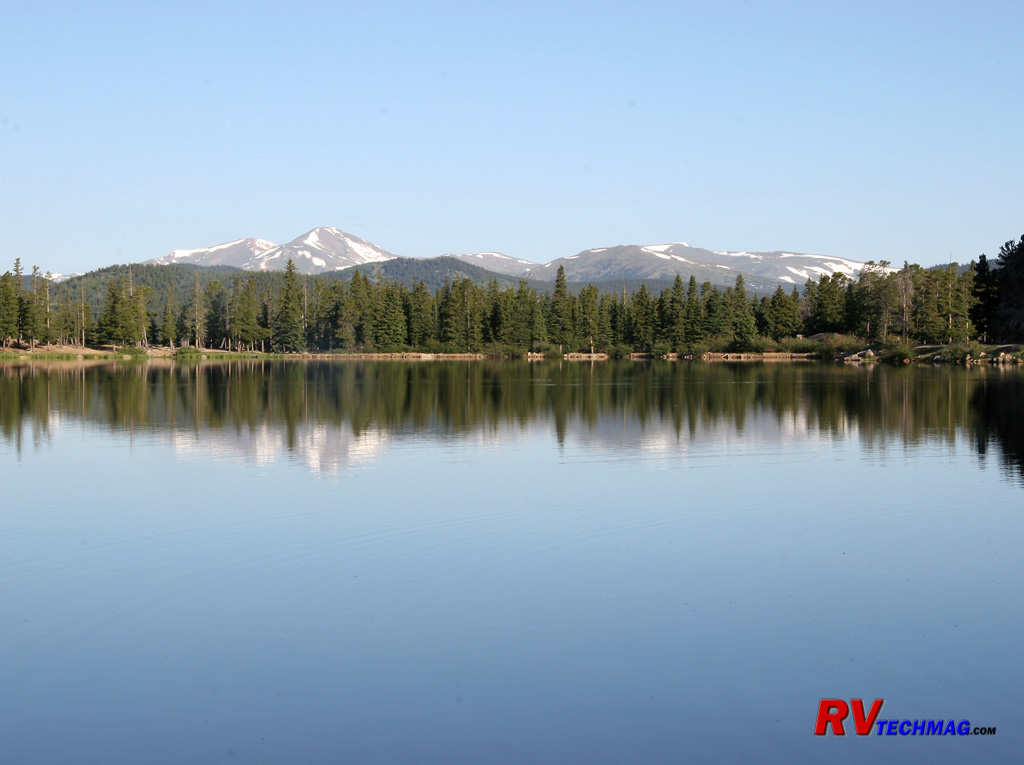
Echo Lake
Situated at 11,000' this jewel reflects the beauty of the sky and the Gore Range to the north.
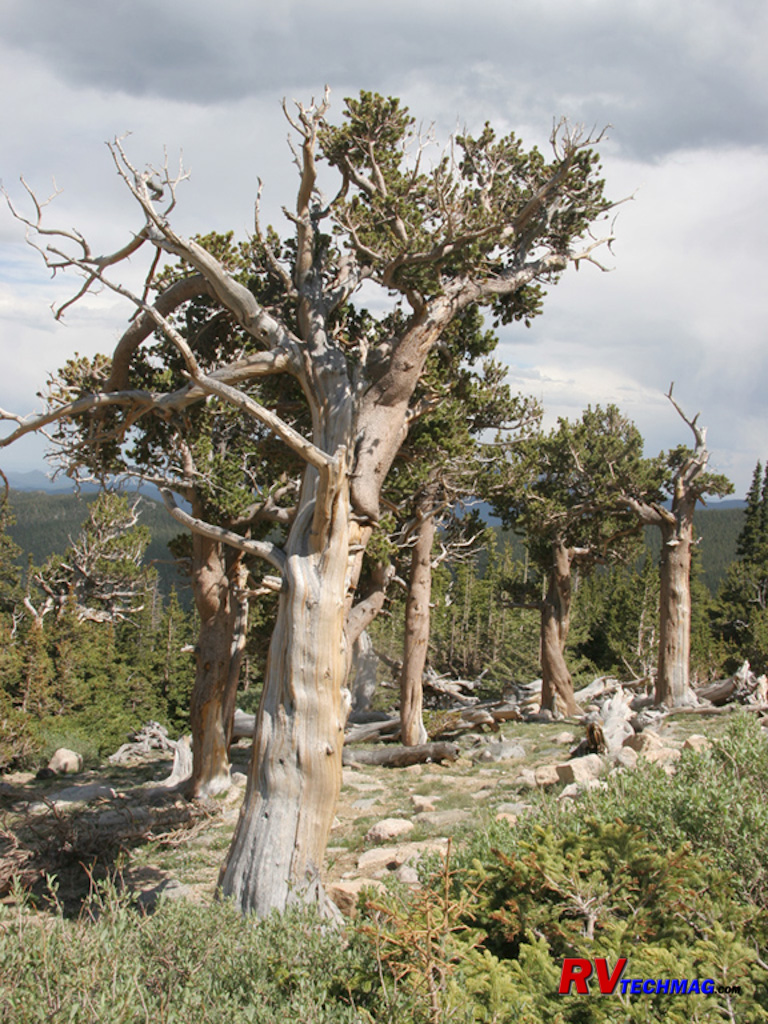
Bristlecone Pine
Bristlecone Pine grow at high elevations, generally above 12,000'. These trees are well adapted to the harsh environment they
live in. Battered and twi8sted by the strong winds at these elevations they take what little moisture and nutrients they can from the soil. Mature
trees such as these will be over 1,000 years old and their growth is measured microscopically compared to other trees. Their hardy nature makes it
easy for them to tough out the long harsh winter that seems to last forever at this altitude.
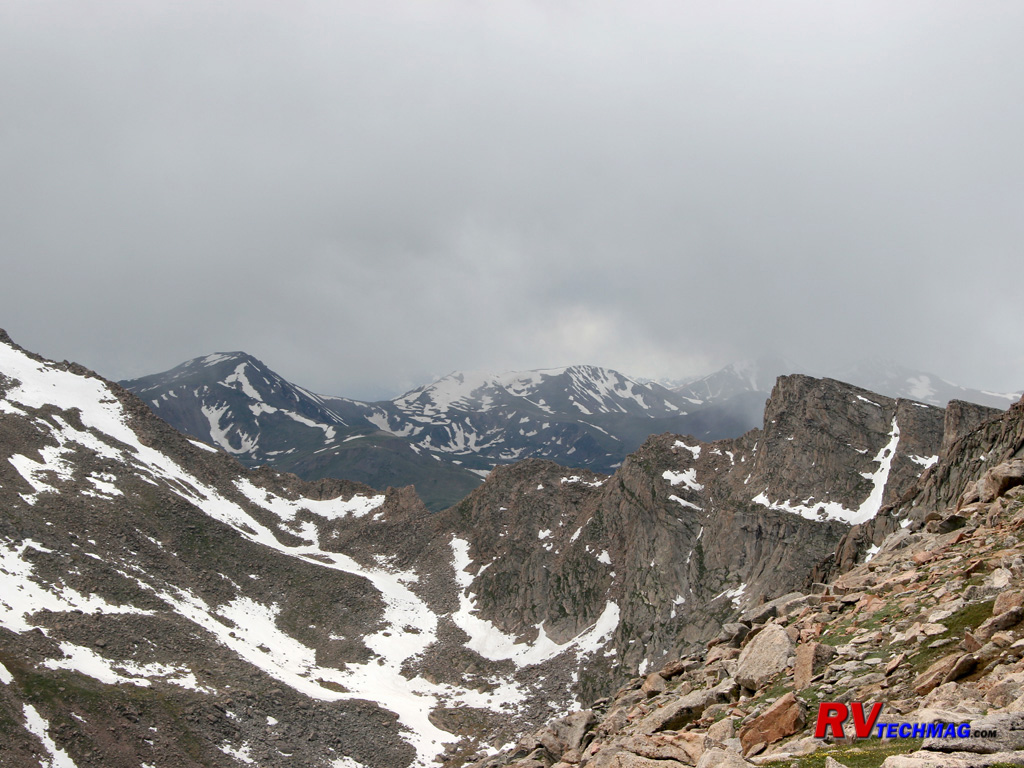
Approaching Storm
An early July storm approaches Mount Evans as seen from its summit. Shortly after this image was taken the snow began to
fall. Mountain weather can be very unpredictable at any time of the year.
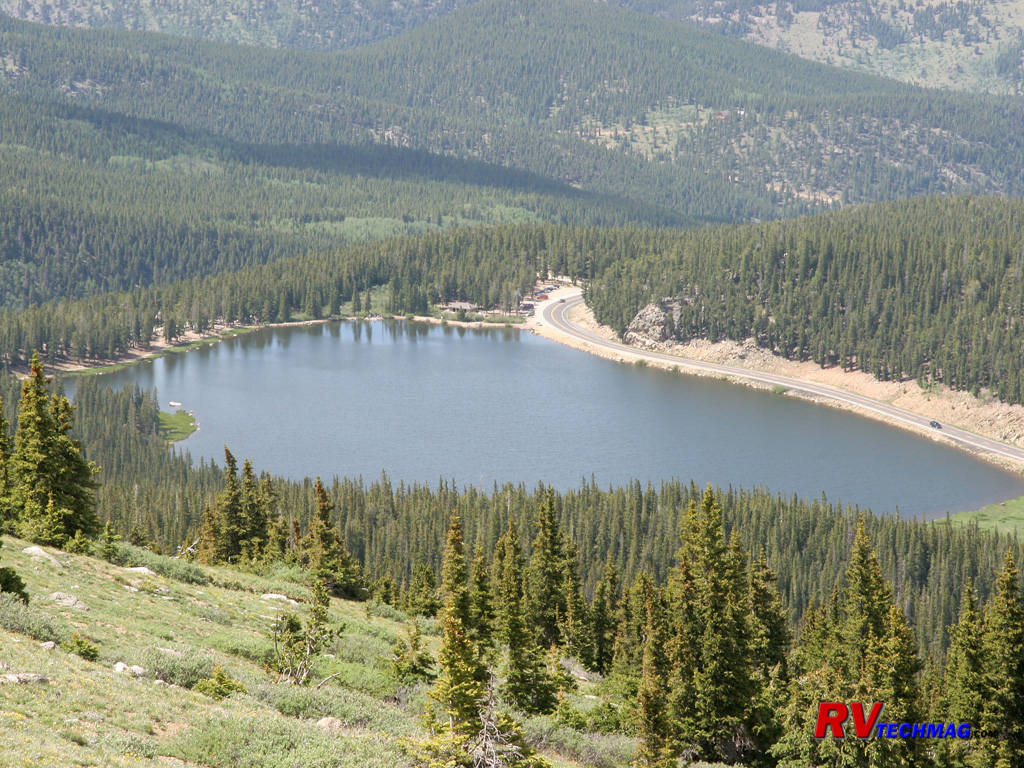
Echo Lake
This view of Echo Lake was taken from the switchback roads above it that wind their way up the mountain's flanks. Echo Lake
Park, maintained by the City of Denver, can be seen at the top of the lake in this northward view.
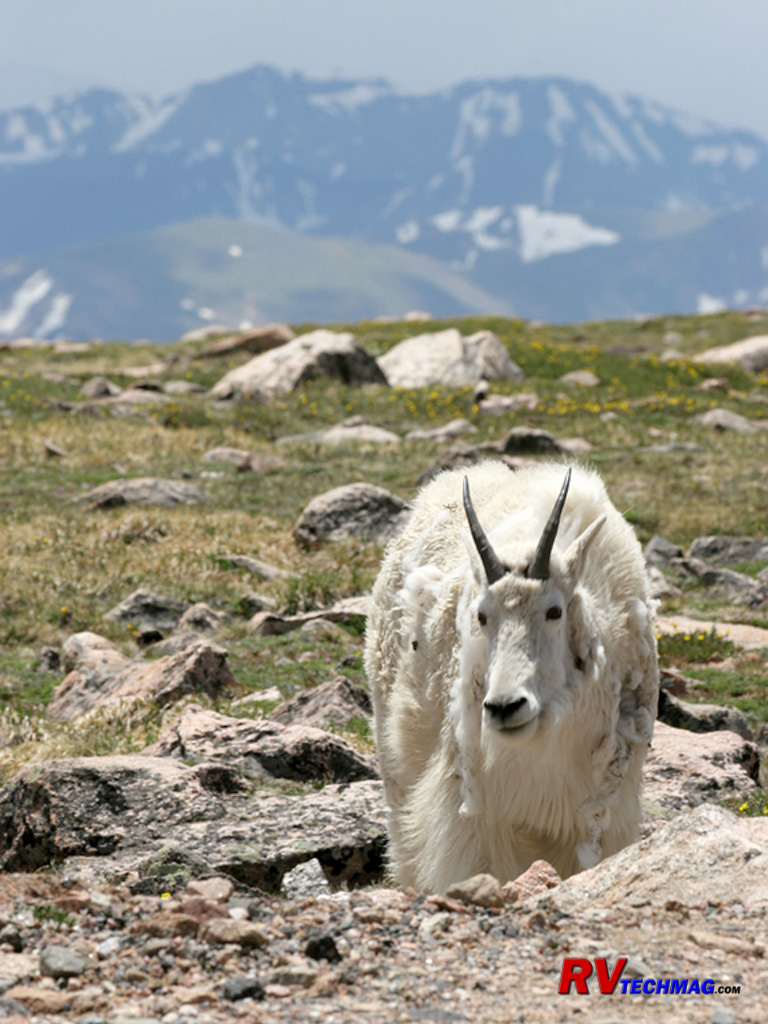
Mountain Goat
Mountain Goats are accomplished climbers. They can be seen scrambling up cliff sides that would require technical climbing
gear for a person. They are normally seen early in the morning or later in the afternoon grazing amongst any green grass that they can find.
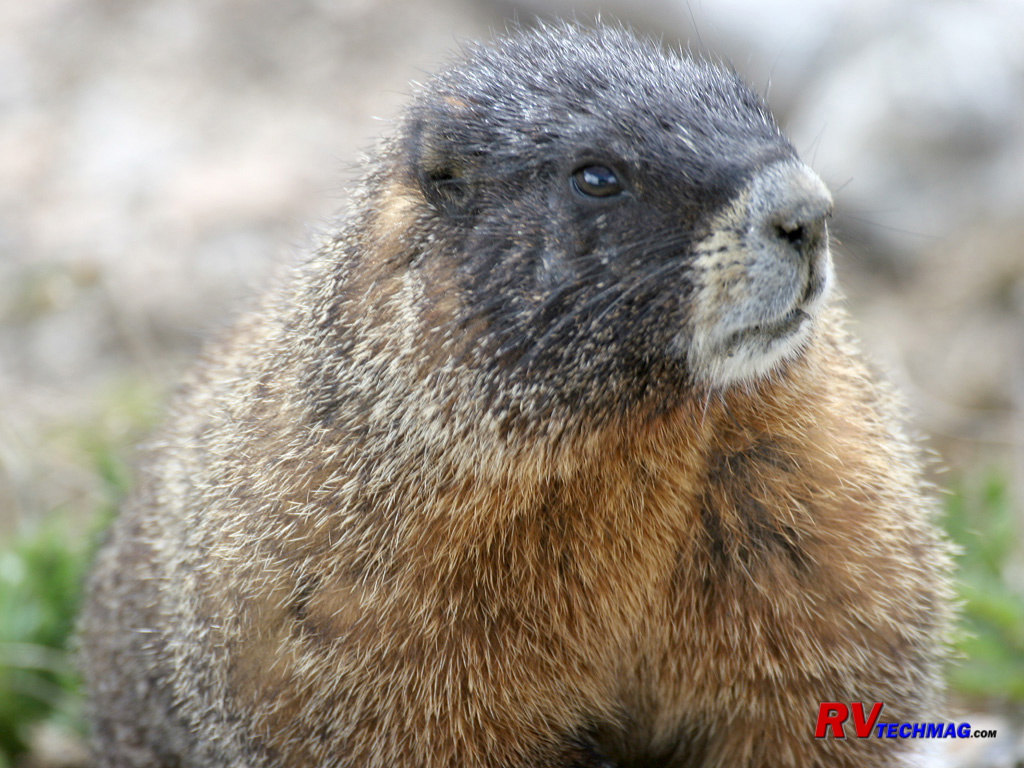
Yellow Bellied Marmot
Marmots, are abundant on Mount Evans, more so than any other mountain in the state of Colorado. Also referred to as Whistle Pigs
or Rock chucks, these relatives of the Woodchuck are found in high elevations and they make their burrows in rocky terrain, which provides them cover
and escape from predators such as Coyotes, hawks, or eagles. They hibernate during the winter and emit a whistling sound to warn others if they feel
they are in danger. During mid-day they are generally sleeping in their dens.
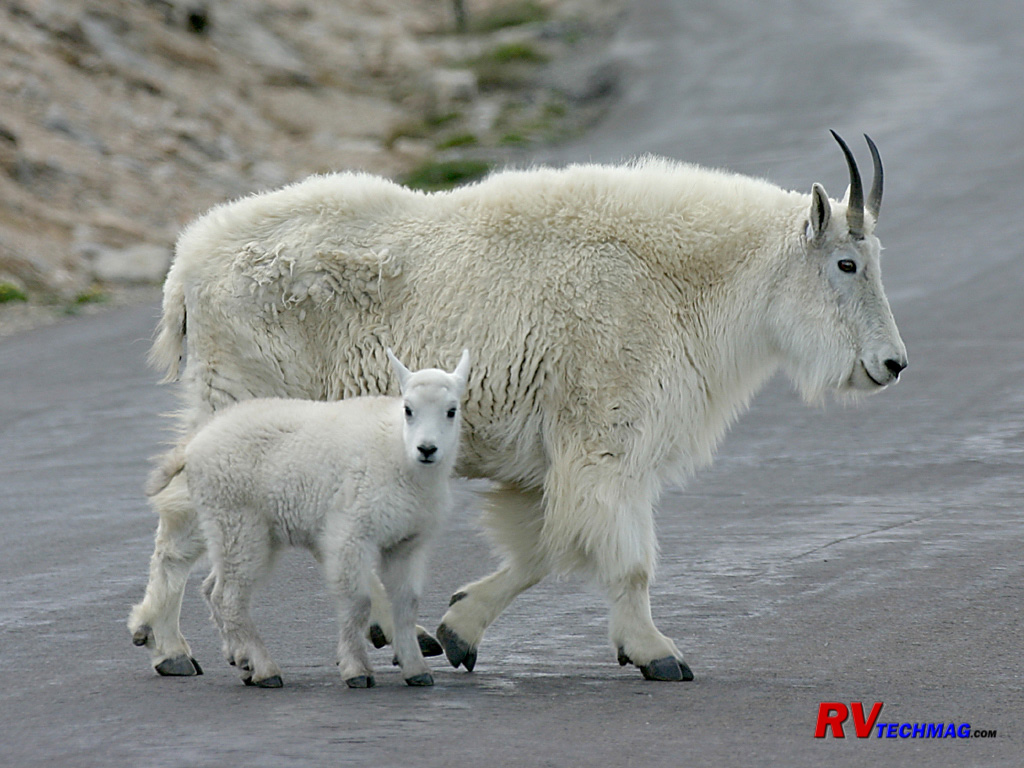
Mountain Goats
This mother and inquisitive baby Mountain Goat were seen crossing the Mount Evans Scenic Byway near the summit.
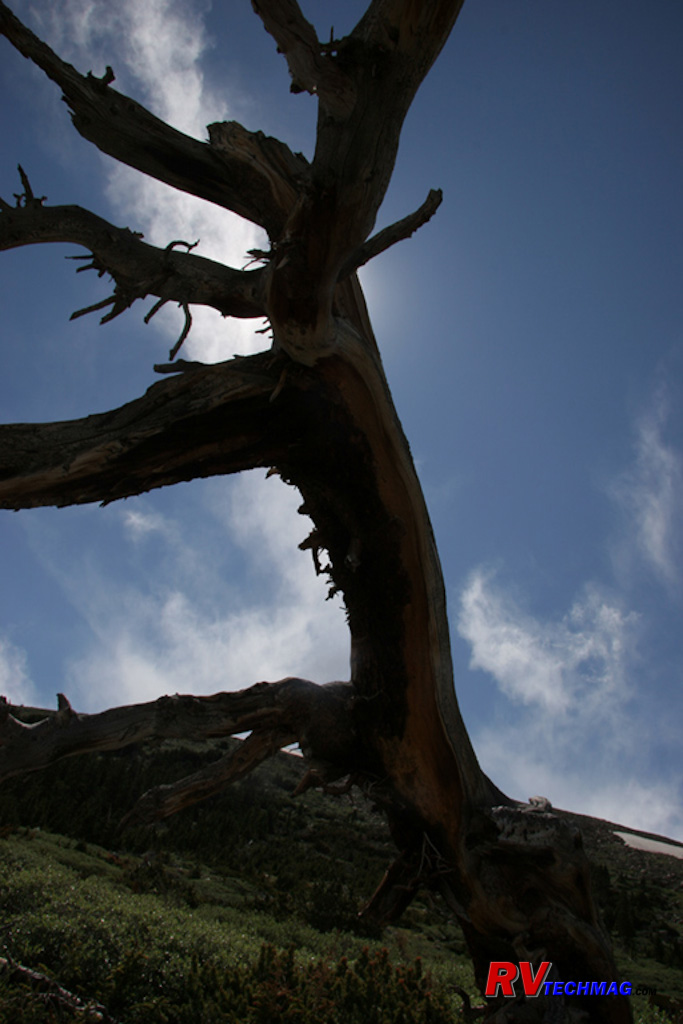
Bristlecone Pine
This Bristlecone Pine stands silhouetted against the sky.

Waterfall
There are a number of streams flowing down Mount Evans. This stream was found in the lower elevations, below Echo Lake.
Return to Home Page
If you enjoyed this article be sure to recommend RVtechMag.com to your friends, like us on Facebook or Twitter
or subscribe to our RSS feed.



|














